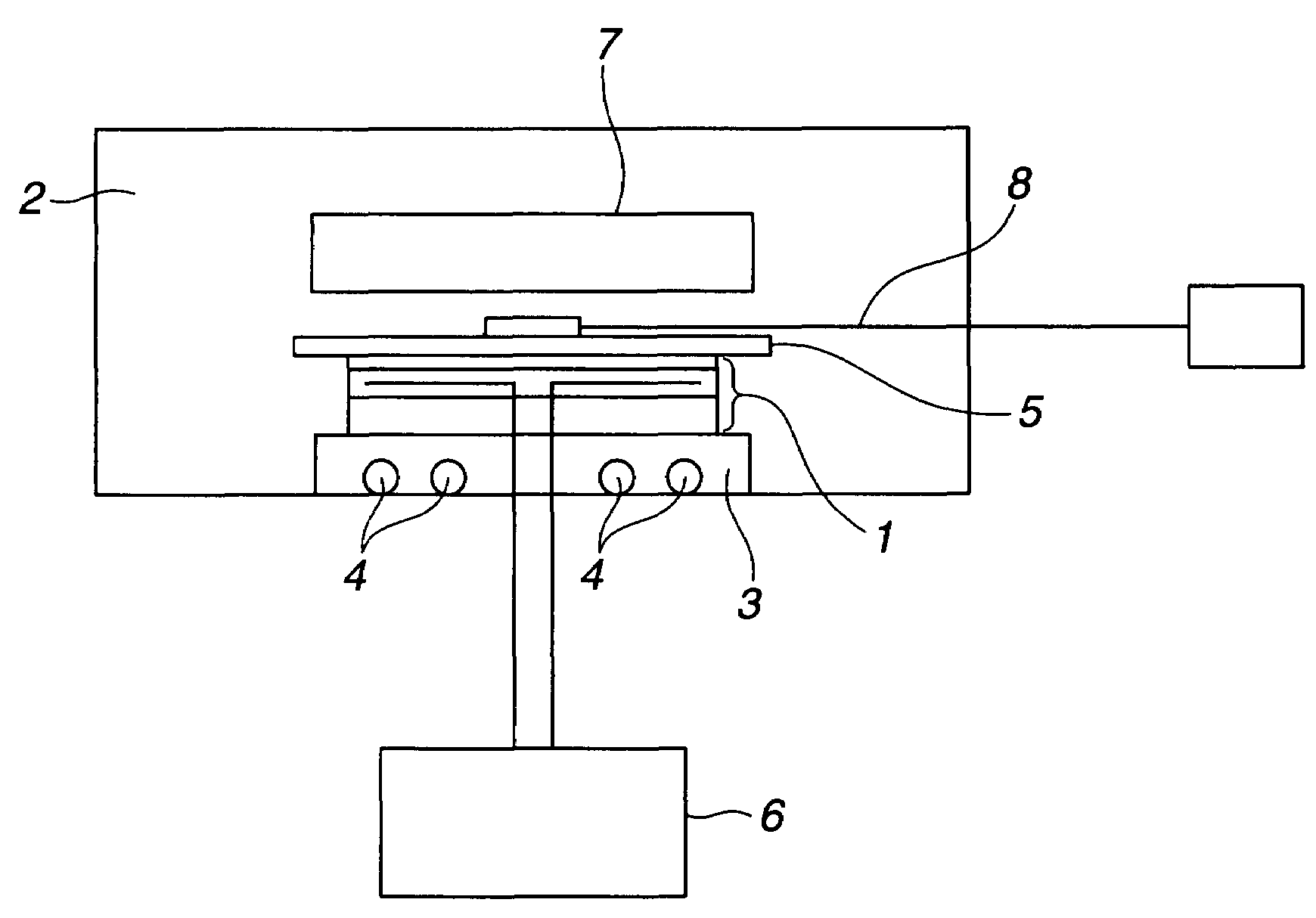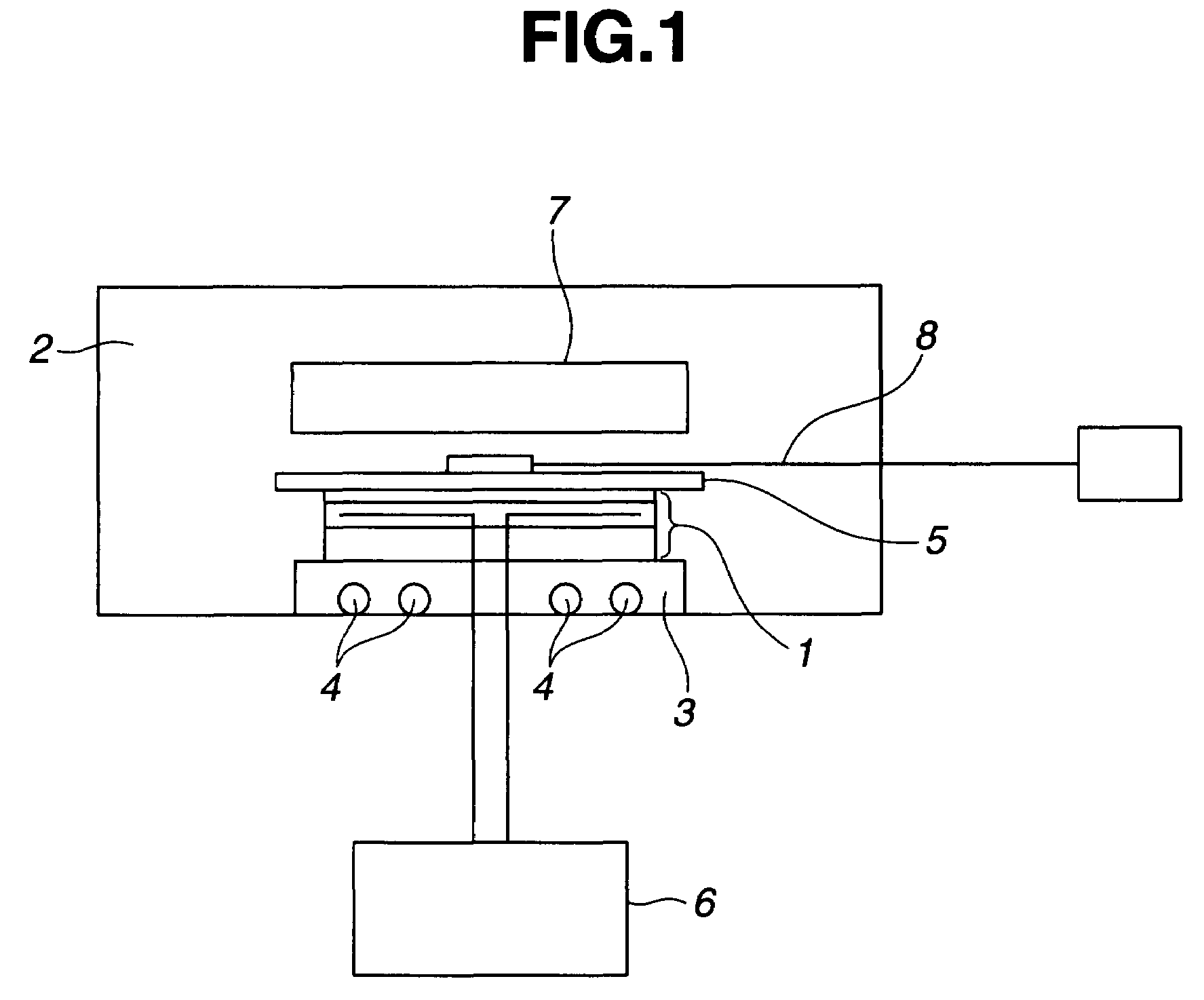Electrostatic chuck
a technology of electrostatic chuck and chuck body, which is applied in the field of electrostatic chuck, can solve the problems of increased thermal contact resistance, hard ceramic insulating layer, and insufficient contact with wafers, and achieves improved cooling capacity, high accuracy, and high step accuracy
- Summary
- Abstract
- Description
- Claims
- Application Information
AI Technical Summary
Benefits of technology
Problems solved by technology
Method used
Image
Examples
example 1
[0036]Using a kneader, 100 parts by weight of methylvinylpolysiloxane consisting of 99.7 mol % dimethylsiloxane units and 0.3 mol % methylvinylsiloxane units and having an average degree of polymerization of 8,000 was kneaded with 65 parts by weight of fumed silica having a BET specific surface area of 300 m2 / g (Aerosil® 300 by Nippon Aerosil Co., Ltd.) and 15 parts by weight of dihydroxydimethylpolysiloxane of the structural formula (2). The mixture was heat treated at 170° C. for 3 hours.
[0037]
[0038]After cooling, the mixture was passed through a strainer with a 200-mesh metal screen for removing foreign matter. Using a two-roll mill, 0.7 part by weight of an organic peroxide, 2,5-dimethyl-2,5-di(t-butylperoxy)hexane was added and milled to form a reinforcing silica-filled silicone rubber composition. The filled silicone rubber composition, 100 parts by weight, was uniformly dissolved in 500 parts by weight of toluene on a homogenizer, and filtered through a 400-mesh metal screen,...
example 2
[0040]Using a kneader, 100 parts by weight of methylvinylpolysiloxane consisting of 99.85 mol % dimethylsiloxane units and 0.15 mol % methylvinylsiloxane units and having an average degree of polymerization of 8,000 was kneaded with 50 parts by weight of fumed silica having a BET specific surface area of 200 m2 / g (Aerosil® 1200 by Nippon Aerosil Co., Ltd.) and 8 parts by weight of dihydroxydimethylpolysiloxane of the structural formula (2). The mixture was heat treated at 170° C. for 3 hours. Using this reinforcing silica-filled silicone rubber composition, as in Example 1, a reinforcing silica-filled silicone rubber layer of 80 μm thick was formed on the surface of the polyimide ESC.
example 3
[0041]Using the reinforcing silica-filled silicone rubber composition in Example 1, a reinforcing silica-filled silicone rubber layer of 180 μm thick was similarly formed on the surface of the polyimide ESC.
PUM
| Property | Measurement | Unit |
|---|---|---|
| particle size | aaaaa | aaaaa |
| specific surface area | aaaaa | aaaaa |
| thickness | aaaaa | aaaaa |
Abstract
Description
Claims
Application Information
 Login to View More
Login to View More - R&D
- Intellectual Property
- Life Sciences
- Materials
- Tech Scout
- Unparalleled Data Quality
- Higher Quality Content
- 60% Fewer Hallucinations
Browse by: Latest US Patents, China's latest patents, Technical Efficacy Thesaurus, Application Domain, Technology Topic, Popular Technical Reports.
© 2025 PatSnap. All rights reserved.Legal|Privacy policy|Modern Slavery Act Transparency Statement|Sitemap|About US| Contact US: help@patsnap.com



